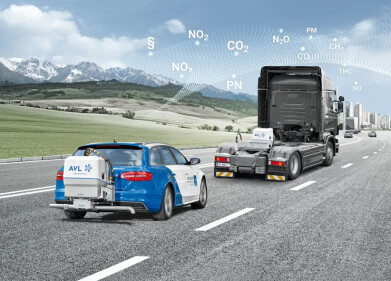Air Monitoring
What Are Biogenic Feedstocks?
Oct 23 2021
With governments around the globe attempting to phase out the use of fossil fuels as their primary energy source and transition towards more sustainable types of power generation, biofuels have enjoyed an increasingly popular role. These alternative fuel sources are derived from biomass, or organic matter that is combusted to create energy.
Having said that, not all biogenic feedstocks come from the same source. While some are grown specifically for the purpose, others are simply by-products of crop cultivation, oil refining or other industrial processes. Here’s a closer delve into the different types of biogenic feedstocks, why some of them have labelled as damaging and what the international community is doing to address the issue.
The different types of biogenic feedstocks
Generally speaking, biogenic feedstocks can be divided into first-generation biofuels and second- or third-generation biofuels. The former, also known as conventional biofuels, are created from crops like beets, corn, palm, rapeseed, soy and wheat. The sugars, starches and oils in these crops are extracted to serve as fuel feedstocks.
On the other hand, second- and third-generation feedstocks, sometimes known as advanced biofuels, are derived from matter which is not deemed as edible by humans. This can include non-digestible parts of the aforementioned crops, such as wheat straw or citrus peels, as well as non-food crops like coppice and miscanthus. It also includes wastes and residues left over from industrial processes, as well as novel feedstocks like microalgae, seaweed and other aquatic plants.
Are biogenic feedstocks damaging?
Biogenic feedstocks are often regarded as essentially carbon-neutral, given that the plants which replace them will absorb the equivalent volume of carbon that they emit during combustion. However, this is only applicable if the feedstocks are indeed replenished; deforestation and land-clearing incidents, for example, are counter-productive.
What’s more, food crops which are grown explicitly for the biofuels industry (as opposed to feeding the planet’s swelling population) can impact negatively upon food security. Given that an overwhelming percentage (as much as 98%) of biofuels come from conventional feedstocks, there are concerns that switching to this type of energy source could do as much (if not more) harm than good.
What can be done?
Nonetheless, there are certainly advantages to the use of biogenic feedstocks in comparison to fossil fuels. A greater discussion of their merits and qualities can be found in the article Biogenic Carbons: Definition, Emissions, Storage & Measurement for those interested. Still, national and international governing bodies (like the European Commission) have taken steps to try and make biogenic feedstocks a more sustainable option.
This includes preventing member states from providing financial aid for the cultivation of first-generation biofuels, as well as capping the percentage of conventional feedstocks which can be used in biofuels. They also aim to incentivise uptake of advanced biogenic feedstocks by attributing them double weighting when taking into account a company’s use of biogenic carbon.
Digital Edition
IET 34.2 March 2024
April 2024
Gas Detection - Biogas batch fermentation system for laboratory use with automatic gas analysis in real time Water/Wastewater - Upcycling sensors for sustainable nature management - Prist...
View all digital editions
Events
Apr 30 2024 Melbourne, Australia
Apr 30 2024 Birmingham, UK
May 03 2024 Seoul, South Korea
May 05 2024 Seville, Spain
May 06 2024 Minneapolis, MN, USA


















